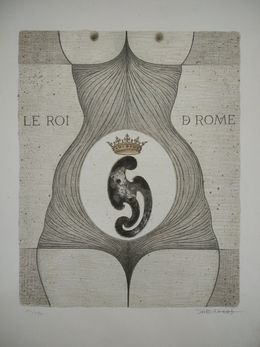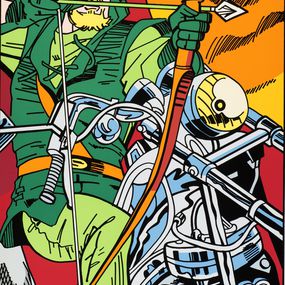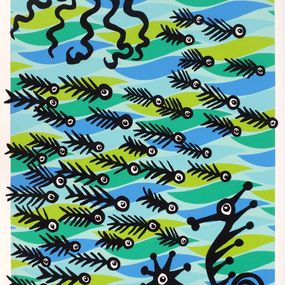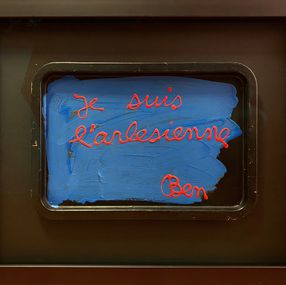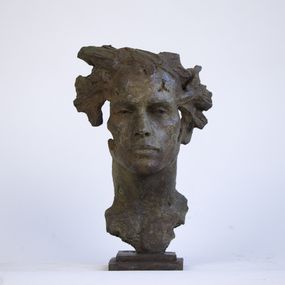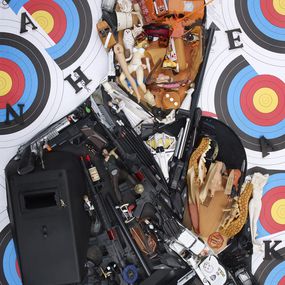

Biography
Josep Maria Subirachs i Sitjar (1927-2014) was a Spanish sculptor and painter, widely recognized for his monumental works and public art installations. Born and raised in Barcelona, he displayed a strong interest in architecture from a young age, though financial constraints prevented him from pursuing formal studies in the field. Encouraged by his father, he developed his artistic skills through drawing, experimenting with perspective and composition. At fourteen, he began working as an apprentice in a gilding workshop, which introduced him to artisanal techniques. Over the years, he took on various jobs, including retoucher, antique restorer, mechanic, lamp base caster, and advertising illustrator. Between 1942 and 1947, he trained under the sculptor Enric Monjo while attending evening classes at the Barcelona School of Fine Arts. His artistic career took a decisive turn in 1947 when he joined the studio of Enric Casanovas, a leading figure of the Noucentisme movement, which significantly influenced his early style.
In 1948, Subirachs held his first solo exhibition at Casa del Libro in Barcelona, showcasing ten sculptures and six drawings. A year later, he exhibited at the II Salon d'Octubre, a key event in the Catalan art scene, where he continued to present his work until 1957. He co-founded the Postectura group in 1950, drawing inspiration from Cubism and Purism. Awarded a scholarship by the Institut Français de Barcelone, he traveled to Paris in 1951, where he encountered the European avant-garde and the work of Henry Moore, whose influence is evident in his evolving sculptural language. His reputation grew internationally when he moved to Belgium between 1954 and 1956, establishing connections with collectors such as Rémy Vanhoidsenhoven. During this period, he married Cecília Burgaya Ibáñez in Brussels, with whom he had three children: Roger, who became a comic book artist, Judit, and Daniel.
Returning to Barcelona, Subirachs collaborated with the advertising agency Zen, founded by Francesca Granados and Alexandre Cirici i Pellicer, securing numerous commissions from Catalan institutions and businesses. His focus on public art stemmed from his belief that art should be accessible to all. In 1957, he received his first public commission for Forma 212, marking the introduction of abstract sculpture into Barcelona's urban landscape. Over the next decade, he worked on large-scale projects, including the façade of the Sanctuary of the Virgen del Camino in León and Evocación marinera in Barcelona's La Barceloneta, the latter sparking controversy for its abstract forms. A politically engaged artist, he created the commemorative medal for the Democratic Students' Union in 1966, with proceeds supporting participants in the Caputxinada, a student protest against Franco's regime.
In 1980, he was elected a member of the Royal Catalan Academy of Fine Arts of Saint George, and in 1982, he was awarded the Creu de Sant Jordi, one of Catalonia's highest distinctions. His career reached new heights when he was commissioned to sculpt the Passion Façade of the Sagrada Família in 1987, a project that would become one of his defining achievements. His ability to blend symbolism, geometry, and modernist aesthetics made this work stand out as a bold reinterpretation of Gaudí's vision. In 1991, he created the Monument to President Macià in Plaça de Catalunya, further cementing his status as a key figure in Catalan public art. He continued to experiment with materials, incorporating terracotta, bronze, iron, wood, aluminum, and steel, and integrating painting into his later sculptural works.
Even after his passing in 2014, Subirachs' legacy remains highly influential in contemporary sculpture and urban art. His children played a crucial role in preserving his work, leading to the inauguration of the Espai Subirachs in 2017, a museum dedicated to his artistic career in the Poblenou district of Barcelona. Though initially planned in collaboration with the Caixa Penedès Foundation, the museum project was postponed due to financial difficulties in 2011. Today, it serves as a significant cultural space, regularly hosting exhibitions and events to celebrate his contribution to modern art. In recent years, there has been a resurgence of interest in his work, particularly in the context of Catalan identity and public art movements. Scholars and art institutions continue to analyze his impact, and his sculptures remain iconic landmarks, attracting visitors from around the world. The Passion Façade of the Sagrada Família is now one of the most visited and studied elements of the basilica, reflecting Subirachs' enduring influence on contemporary sacred art.





